Apple Tree Care 101
Apple trees are a delightful addition to any garden, known not just for their delicious fruits but also for their spectacular blossom displays. But growing apple trees requires a commitment to ongoing care to ensure they stay healthy and productive. Here’s a detailed guide to apple tree care.
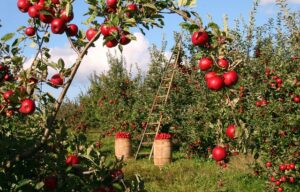
Planting Apple Trees
Select a site with well-drained soil and full sun exposure. Dig a hole twice as wide as the root ball and just as deep. Place the tree in the hole, ensuring the graft line (the swollen area on the stem) is above soil level. Backfill with soil, firm it gently, and water thoroughly.
Consider the adult size of your apple tree when choosing a site. Apple trees are in general classified as dwarf, semi-dwarf, and standard. Dwarf trees reach 6-10 feet tall while semi-dwarf ones grow to about 12-15 feet. Standard apple trees can attain up to 20-25 feet in height.
Apple trees thrive best when planted in late autumn or early spring, during dormancy. This timing allows the tree’s roots to establish in the new location before the growing season begins. As for the size, young apple trees, often referred to as whips, are the most common choice. These trees, which are typically around 1 to 2 years old and 4-6 feet tall, exhibit a higher success rate compared to more mature, larger trees. They are easier to handle and tend to adapt better to a new environment.
Pollination of Apple Trees
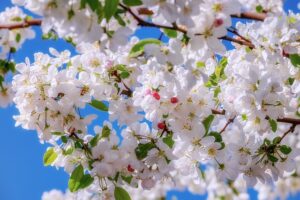
Pollination is a critical aspect of successful apple production. Apple trees are not self-pollinating, meaning they require pollen from another apple variety to produce fruit. Bees are the primary pollinators for apple trees, transferring pollen from flower to flower as they gather nectar.
You should plant at least two different apple tree varieties within close proximity to ensure cross-pollination. Additionally, the two varieties should bloom around the same time for effective pollination. Some apple varieties, known as triploids, have sterile pollen and cannot pollinate other trees, so they need to be planted alongside two other non-triploid varieties.
During the bloom period, ensure that the pollinators have an optimal environment. Avoid applying pesticides when the trees are in bloom, as this can harm bees and other beneficial insects. Providing a source of water for bees and planting other nectar-rich flowers nearby can also help attract more pollinators to your apple trees.
Watering Apple Trees
Young apple trees need consistent moisture, especially in dry periods. Water them weekly, soaking the soil well to encourage deep root growth. Once established, apple trees can tolerate some drought but perform best with regular watering.
Fertilizing Apple Trees
Begin fertilizing in the spring when the tree starts to grow. Use a balanced, slow-release fertilizer and follow the package instructions. Avoid over-fertilization as it can lead to lush foliage at the expense of fruit production.
Composting and Natural Manures as Fertilizers
Composting and the use of natural manures serve as an organic and sustainable approach to maintaining the health of your apple trees. Compost, enriched with decayed organic material, improves the soil texture while gradually releasing nutrients that apple trees need for growth. It also enhances the water-holding capacity of the soil, reducing the need for frequent watering. Natural manures like cow, poultry, or horse manure, are also beneficial. They not only provide a broad spectrum of nutrients but also improve the soil’s structure, enhancing its ability to retain water and nutrients. However, it’s important to fully compost these manures before using them to avoid any potential pathogens. Remember to apply compost or manure to the soil surface rather than mixing it in, to mimic nature’s way of building soil from the top down.
Companion Plants for Apple Trees
Companion planting is a beneficial gardening technique that pairs certain plants together for mutual benefit. For apple trees, these companions can help improve their health and increase their production. A few noteworthy companions include:
- Chives: Known for their strong scent, chives deter pests such as aphids and borers that are commonly attracted to apple trees. In addition, chives improve soil nutrients by accumulating sulfur, an essential mineral for apple trees.
- Comfrey: Comfrey plants are deep-rooted and they bring up nutrients from the subsoil which can be used by the apple trees. The leaves can also be used as mulch.
- Nasturtiums: Nasturtiums serve as a trap crop for pests, especially aphids, drawing them away from the apple trees.
- Dill: This herb attracts beneficial insects like wasps and hoverflies, whose larvae feed on apple tree pests.
- Yarrow: Yarrow improves soil quality and attracts insects that are beneficial for pollination, such as bees.
Remember to keep your companion plants well-watered and cared for, as their health directly influences the health of your apple trees.
Pruning of Apple Trees
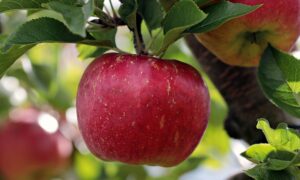
Pruning is crucial for apple tree health and fruit production. In the first few years, focus on creating a strong, branching structure. Remove any dead, diseased, or crossing branches. As the tree matures, prune to maintain an open canopy that allows light and air circulation. You are looking to develop a cup shape that is open is easier to harvest from and allows air and sunlight in.
Common Pests Affecting Apple Trees
Apple trees have lots of pests you must stay on top of if you want your trees to thrive.
- Aphids: These small, soft-bodied insects cause damage by sucking sap from the apple tree, distorting leaves, and spreading diseases. Methods of organic treatment include introducing natural predators such as ladybugs and lacewings, or using a strong spray of water to knock off the aphids.
- Codling Moths: These pests lay eggs on the fruit, which then hatch into worms that feed on the inside of the apples. To control them organically, use traps with pheromones to attract male moths and prevent
- Apple Maggot: These pests burrow into apples causing them to become malformed and drop prematurely. Methods of treatment include using sticky traps and setting up barriers around the base of the tree to prevent adult flies from laying their eggs near the tree.
- Sawfly: Also known as apple slugs, these pests chew holes in the leaves of apple trees, leading to defoliation and reduced fruit yield. To control them, remove and destroy affected leaves and use insecticidal soap or neem oil.
- Tarnished Plant Bugs: These bugs feed on apple tree buds causing them to wither and drop off. To control them, prune off affected buds in the spring and use insecticidal soap or neem oil on the remaining ones.
- Scale Insects: These tiny pests attach themselves to the stems and undersides of leaves, sucking the tree’s sap and causing leaf drop and twig death if left untreated. To treat them, use horticultural oil or neem oil to suffocate and kill the insects.
- Apple Scab: This fungal disease causes black spots on leaves and fruit, leading to reduced fruit quality and yield. To prevent it, remove fallen leaves from around the tree in the fall and apply a copper-based fungicide in the spring.
- Apple Tree Borers: These pests tunnel into the trunk of apple trees, causing damage to the tree’s vascular system and weakening its overall health. To prevent them, wrap tree trunks with sticky paper in the early spring and use insecticidal sprays if necessary.
Proper Care and Maintenance: In addition to treating pests and diseases, proper care and maintenance of apple trees is essential for their overall health and productivity. This includes regular pruning to promote air circulation, fertilizing as needed, and providing adequate water and fertilization.
Common Diseases Affecting Apple Trees
Powdery Mildew:
A common fungal disease that creates a powdery white coating on leaves and shoots. Use a baking soda and water solution or sulfur-based fungicide to treat it. For the organic treatment of Powdery Mildew, a baking soda solution can be quite effective. Mix 1 tablespoon of baking soda into 1 gallon of water. This mixture should be applied to affected areas of the apple tree once a week during the growing season. Start applying as soon as you notice the symptoms of Powdery Mildew, or even earlier as a preventative measure if this disease has been a problem in previous years. Always apply the solution in the early morning or late evening to avoid burning the leaves.
Fire Blight
An aggressive bacterial disease that can quickly kill entire apple trees if left untreated. The bacteria enter through wounds or natural openings in the tree, causing blackened, scorched branches and leaves. It is spread by insects and rain, making it difficult to control. To prevent Fire Blight, it is important to maintain good hygiene practices in your apple orchard. This includes removing diseased branches and fruit, as well as pruning in the winter to promote good air circulation. You can also use copper-based bactericides to help prevent infection. It is important to monitor your trees closely for any signs of Fire Blight and take action immediately if detected.
There are organic treatments available for Fire Blight. Some options include spraying affected trees with a compost tea made from beneficial bacteria and fungi, using a biological control agent called Bacillus subtilis, or applying plant-based essential oils such as oregano, thyme, or rosemary. However, these methods may not be as effective as conventional treatments and may need to be applied more frequently. It is important to consult with a local expert or do thorough research before trying any organic treatment for Fire Blight. Additionally, it is always recommended to try prevention methods first before resorting to treatments. Maintaining good hygiene practices and promoting overall tree health can go a long way in preventing Fire Blight in the first place. It is also important to note that some organic treatments may not be approved for use in all regions or may have specific instructions for application, so it is important to check with local regulations and follow instructions carefully. Overall, while there are organic options available, it is important to weigh the effectiveness and potential limitations before deciding on a treatment method. Ultimately, taking preventative measures and removing the affected tree may be necessacary.
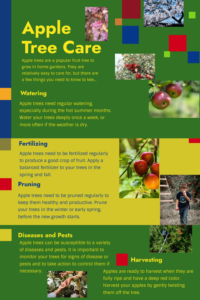
Cedar Apple Rust
Cedar Apple Rust is A fungal disease that causes orange spots on leaves and can lead to early leaf drop. To control it, remove nearby cedar trees which serve as the alternate host for the fungus. The following are some effective fungicides.
- FirCopper-based Fungicides: These are broad-spectrum fungicides that are typically used for a wide range of fungal diseases, including Apple Scab. Copper fungicides are best used before the fungus is visible, as they work to prevent the disease from entering the host. Is it organic? Yes, copper is a naturally occurring element and can be found in many forms, such as copper
- Sulfur-based Fungicides: Sulfur inhibits fungal development and is commonly used on apples to prevent Powdery Mildew, among other diseases. Be careful when using sulfur under high temperatures, as it can damage the plant. Some sulfur-based fungicides are considered organic, but not all of them. It is important to carefully read the label and look for certifications such as OMRI (Organic Materials Review Institute) before purchasing a sulfur-based fungicide. These certifications ensure that the product meets certain standards for use in organic farming practices.
- Neem Oil: An organic option that disrupts the life cycle of fungi upon contact. Neem oil can be used for various diseases, including Apple Scab and Powdery Mildew. Neem oil is considered an organic option for controlling fungal diseases on apple trees. Its ingredients come from the neem tree and it does not contain synthetic chemicals. However, it is important to note that some organic treatments may have specific instructions for use or regional restrictions. It is always best to check with local regulations and follow instructions carefully when using any type of treatment on apple trees. Additionally, it is important to rotate treatment methods and not rely solely on one organic option, as this can potentially lead to the development of resistance in fungal populations.
- Other preventative measures for controlling fungal diseases on apple trees include proper pruning and maintenance practices. This includes removing any dead or diseased branches, promoting air circulation by thinning out dense foliage and keeping the area around the tree clean and free of debris. Regularly sanitizing pruning tools can also help prevent the spread of fungal spores.
- Cultural methods that can be used to reduce the risk of fungal diseases on apple trees. This includes selecting disease-resistant varieties, planting in well-drained soil, and avoiding overhead irrigation
- Myclobutanil: An effective fungicide for controlling a wide range of diseases in apple trees, including Apple Scab and Powdery Mildew. The product should be applied at the first sign of disease and then at intervals of about 14 days. Is it organic? No, Myclobutanil is a synthetic fungicide.
- Propiconazole: This systemic fungicide is highly effective in treating Powdery Mildew Propiconazole is not considered an organic option for controlling fungal diseases in apple trees. It is a synthetic fungicide that has been approved for use in agriculture by the Environmental Protection Agency (EPA). While it may be highly effective in treating certain diseases, some people may prefer to use organic options such as neem oil or sulfur-based fungicides.
Remember to always follow the manufacturer’s instructions when applying fungicides, to ensure safe and effective use. Different fungicides may also be more or less effective depending on your specific conditions, so consider consulting with a local extension service or agricultural professional for more personalized advice.
Collar Rot:
Collar rot is a particularly vicious disease of apple trees that causes the bark to rot at the soil line. This can lead to the tree’s eventual death if not treated. Treatment includes removing the infected bark and soil, as well as applying a fungicide like copper sulfate to prevent further spread. However, prevention is key in avoiding collar rot. This includes proper pruning techniques to promote good air circulation and proper drainage, as well as maintaining a healthy balance of nutrients in the soil.
Sooty Blotch:
Sooty blotch is a fungal disease that causes dark, sooty spots on the fruit’s skin. This disease doesn’t affect the fruit’s taste but makes it unsightly. The treatment for this is to keep the fruits dry and free from excess moisture, as this fungus thrives in wet conditions. Pruning the tree to improve air circulation can also help prevent sooty blotch.
Alternaria Blotch:
Alternaria blotch is another fungal disease that causes dark brown spots on apple leaves and fruit. This disease is more common in warm, humid climates but can still occur in other regions. To prevent Alternaria blotch, avoid overhead watering and remove any infected leaves or fruit from the tree and surrounding area.
Bitter Rot:
Bitter rot is a fungal disease that causes small, sunken lesions on the fruit, which eventually turn into large, rotting areas. This disease can significantly reduce yield if left uncontrolled. The treatment is similar to other fungal diseases, by keeping the tree and surrounding area clean and removing any infected fruit.
Black Rot:
This fungal disease affects all parts of the apple tree, causing dark lesions on fruits, leaves, and twigs. Over time, the affected areas turn black and hard, resembling the appearance of burnt wood. The treatment is similar to other fungal diseases, by improving air circulation and removing any infected plant material. Pruning the tree to allow more sunlight in can also help prevent black rot.
What apple diseases will copper spray treat?
Copper spray can be effective in treating a variety of fungal diseases in apple trees, such as apple scab, cedar-apple rust, and powdery mildew. However, it is important to note that not all fungal diseases can be treated with copper spray. It is best to properly identify the disease affecting your apple trees and consult with a professional before using any treatment method. This will ensure that the disease is effectively treated without causing harm to the tree or the environment. So, it is recommended to use copper spray only as a last resort after considering natural and organic methods of disease control. Additionally, it is important to follow safety precautions when using any chemical treatments on apple trees to protect yourself and others from harmful exposure.
Is copper spray considered an organic treatment?
Copper spray is not considered organic, as it contains chemicals that are harmful to the environment. It is recommended to use natural methods such as pruning and proper tree care to prevent diseases in apple trees. Additionally, using organic fungicides made from natural ingredients may also be effective in controlling diseases without harming the environment. So, it is best to avoid using copper spray on your apple trees unless absolutely necessary. If you do choose to use copper spray, make sure to follow the manufacturer’s instructions carefully and only apply it when necessary. Always wear protective gear and avoid spraying on windy days to prevent harmful exposure. Overall, it is important to consider the potential negative impacts of using chemical treatments and explore organic alternatives first before resorting to them. This article belongs to pineyriverhomestead published 10-14-23.
For information on organic pest control click here.
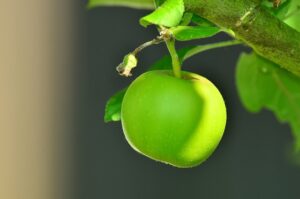
Conclusion
In conclusion, effective apple tree care extends beyond the use of chemical treatments, and involves more sustainable practices such as pruning, proper hygiene, and the use of organic fungicides. Copper spray, although effective in treating certain fungal diseases, is not considered an organic treatment and may have detrimental impacts on the environment. Hence, it should only be used as a last resort when all organic alternatives have failed. Furthermore, when used, all safety precautions should be strictly adhered to, protecting yourself and the environment from potential harm. With careful consideration and responsible practices, we can ensure the health of our apple trees while preserving our environment.
For more on gardening check out my article on nitrogen fixing plants here.
If you are interested in how to grow grapes click here.
